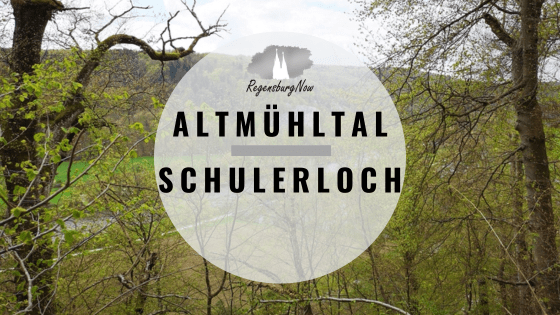
Schulerloch
EXCURSION WITH CHILDREN TO THE ALTMÜHLTAL!
From the Schulerloch stalactite cave to Essing and back.
I recently had a visit from my sisters and children, so I thought about what we could do at the weekend. We wanted to go sightseeing, do a bit of hiking and my nephew wanted to go on a summer toboggan run. The choice fell on the beautiful Altmühltal about 30 km away, because there is the Schulerloch stalactite cave, exciting castles and the AltmühlBOB leisure park near Riedenburg with a summer toboggan run. Perfect for a weekend getaway!
So we started at the parking lot at Schulerloch (left on the graphic, address: Oberau 2, 93343 Essing). The parking lot is signposted. From there, turn left up to the Schulerloch. Allow 15-20 minutes for the ascent.

Once at the top, you buy your tickets at the ticket office; the cave can only be visited with a guided tour. The 2023 season is from April 1 to November 5, the cave is open daily from 10.00 am to 4.00 pm, in summer from May 1 to September 10, 2023 even until 4.30 pm. Guided tours take place every 30 minutes.
There is a small museum to shorten the waiting time for the next tour and a café with drinks, treats and homemade cakes.
Incidentally, the cave cannot be visited in winter as it is inhabited by bats that hibernate in the cave, which is a constant 9° Celsius. The Schulerloch was first mentioned in a letter in 1783, although it was known far earlier. The name Schulerloch, as was explained to us during the guided tour, is probably derived from a Druid school, while others say the name goes back to the old Bavarian word Schuller for robber.
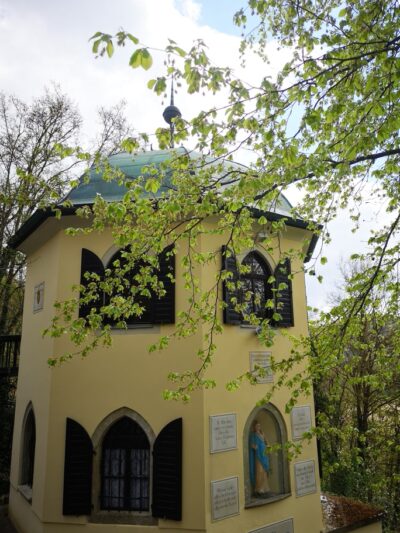
This karst cave is said to be no less than 1.5 million years old! At 420 meters long, the Schulerloch is one of the longest caves in the Lower Altmühltal. A sign above the entrance to the cave reads “To the temple of nature”.
Neanderthals are said to have lived here between 40,000 and 60,000 years ago, but finds confirm that people lived in the cave during the Neolithic and Bronze Age. Our guide showed us the different rooms of the cave, with concerts taking place in the largest room in summer.
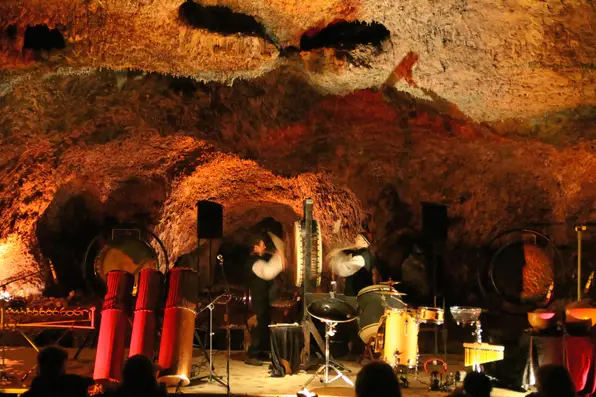
During the tour, the different types of stalactite are explained: the small stalactites come from the ceiling like cones, the stalagmites from below. We were also shown a stalagnate, which is the name given to the shape when a stalactite and stalagmite have grown together. Stalactites are calcium deposits formed by dripping water. When the water saturated with lime evaporates, lime residue remains. On average, stalactites grow about one millimeter in ten years. There are hundreds of small stalactites and stalagmites here. Our guide told us at the beginning that we should not touch the stalactites, as the layer of fat on our skin would destroy the formations.
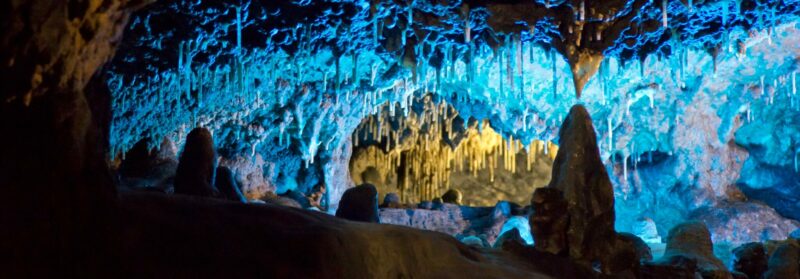
There are no large stalactites in the Schulerloch, but a real special feature are some sinter pools reminiscent of water basins, which were also formed by lime deposits. According to our guide, such free-standing water basins (cup stalagmites) have never been discovered in any other cave in the world. Unique!
Photography is prohibited in the Schulerloch, so we were unable to take our own photos in the stalactite cave. However, there are special photo tours, Bavarian tours and even meditative tours. There are discovery tours for children and even children’s birthday parties can be celebrated here.
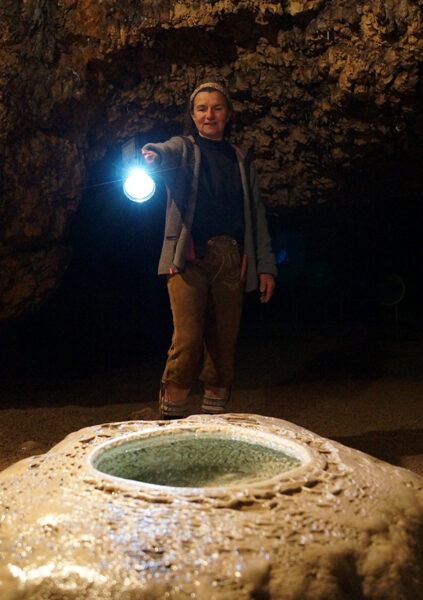
At the end of the tour, a movie is shown in the main room. It sounds boring at first, but it’s really cool because it’s more of a multimedia light show that tells the story of the formation of the earth, the Jurassic Sea, the Neanderthals, the Stone Age and mammoths right up to the present day. At the exit you will find “cave paintings”, imitations of course, as most of the well-known cave paintings are not found here, but in France and Spain. Examples can be seen in the small museum at Schulerloch. 200 meters west of the Schulerloch there is a cave, the Kleine Schulerloch, in which the prehistoric rock carving of an ibex or reindeer was found. The cave is closed and cannot be visited.
All in all, the visit to the Schulerloch stalactite cave was an impressive and interesting experience, and the children also enjoyed it very much. All information and prices can be found at schulerloch.de.
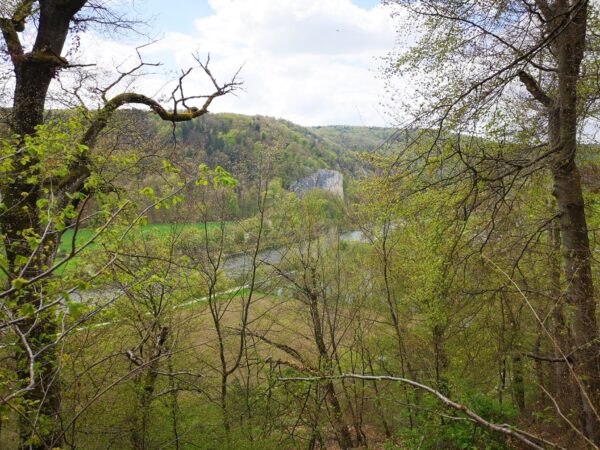
At Schulerloch there is a signpost to Essing. The 3 km long path leads through the forest, past meadows and crosses a road twice until you reach the beginning of Essing. Follow the hiking sign 26.
Eating
Essing is beautifully situated on the Altmühl, with Randeck Castle, one of the oldest castles in Bavaria, towering over the tranquil town. In the Middle Ages, the castle provided shelter for robber barons. The market square in Essing is particularly beautiful, with its market fountain and the Bruck tower, which serves as a passageway to the old wooden bridge.
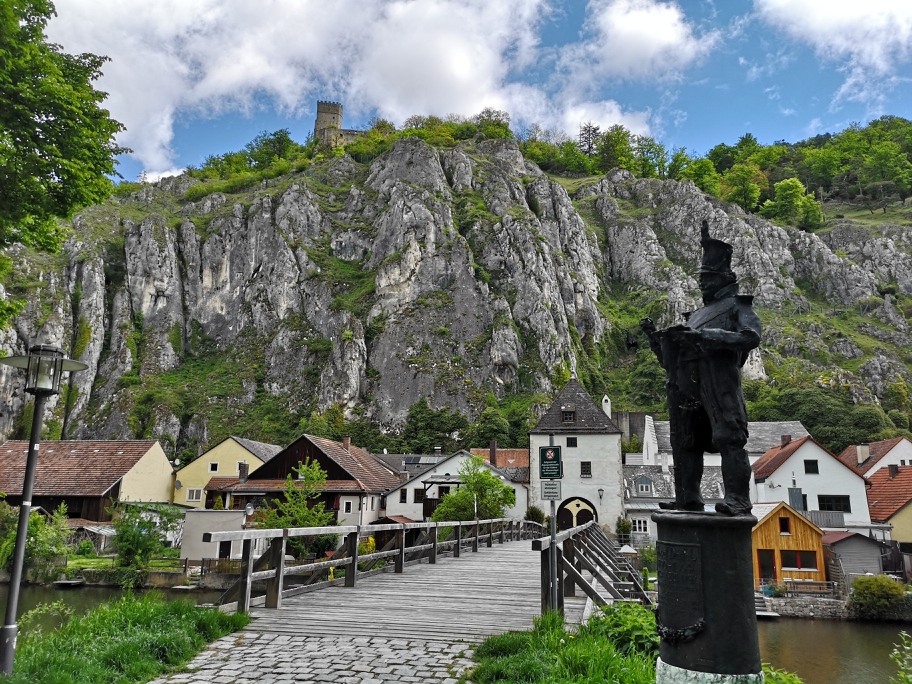
The Tatzlwurm
A special attraction in Essing is the so-called Tatzlwurm. This is one of the longest wooden bridges in Europe (190 m), which crosses the Main-Danube Canal near Essing and connects both sides of the valley. Incidentally, a Tatzlwurm (or Tatzelwurm) is not actually a bridge, but an Alpine mythical creature. It is a half-dragon with a snake-like body and two paw-covered front legs, a mixture of dragon and lindworm, so to speak.

Klausen cave
The Klausenhöhle cave is very close to Essing. If you cross the Tatzlwurm from Essing, a path leads slightly to the left across a meadow into the forest. If you turn left here, you will reach the Klausenhöhle cave, or rather caves, after about 10 minutes on the right. The Klausen caves were also used as living caves in the Stone Age.
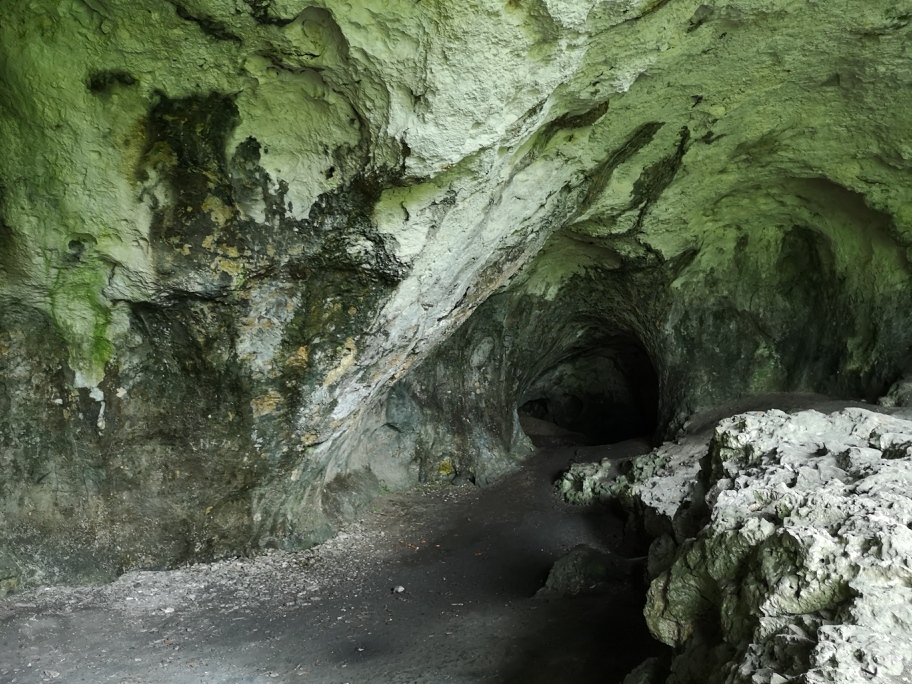
However, we skipped the Klausenhöhle and went back to the church in Essing and from there took the same route (signposted 26) back to the Schulerloch parking lot. At the church, turn left up the “Burgweg” from which you go straight ahead at the end onto the forest path back to the road to Randeck. Then cross the road and after approx. 100 meters turn right onto the forest path. At the end of the path, you descend a flight of steps. At the bottom, turn left, cross a tarred road and from there simply follow the signs to Schulerloch.
AltmühlBOB in Riedenburg
From the Schulerloch parking lot, we continued on to AltmühlBOB, an amusement park in Riedenburg (address: St. Agatha 6, 93339 Riedenburg). On the way there we saw Randeck Castle again, the Tatzlwurm and then we discovered Prunn Castle on a Jura rock above the Altmühl.
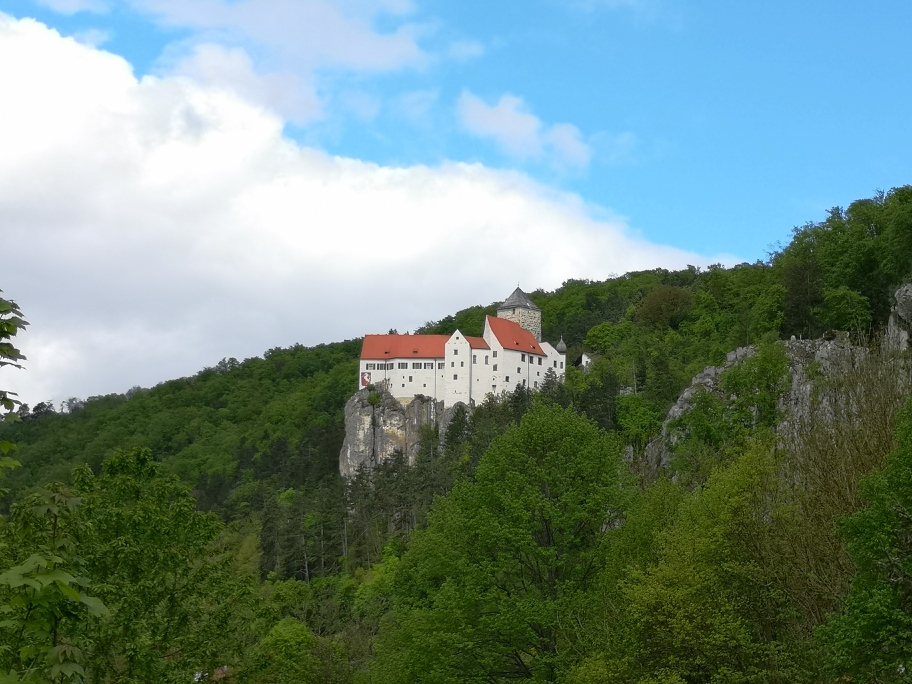
But we drove on to Riedenburg, a town at the foot of Rosenburg Castle and the two castle ruins of Rabenstein and Tachenstein. There is a bird of prey show in the courtyard of the picturesque Rosenburg castle. We’ll do that on our next visit to the Altmühltal.
Behind Riedenburg is the AltmühlBOB leisure park, with a summer toboggan run, a quad bike track, climbing paradise, SpeedBob, beer garden, playground and a small petting zoo.
The toboggan run is 1,000 meters long. Of course, it was great fun for the children. You can find all the information at www.altmuehlbob.com
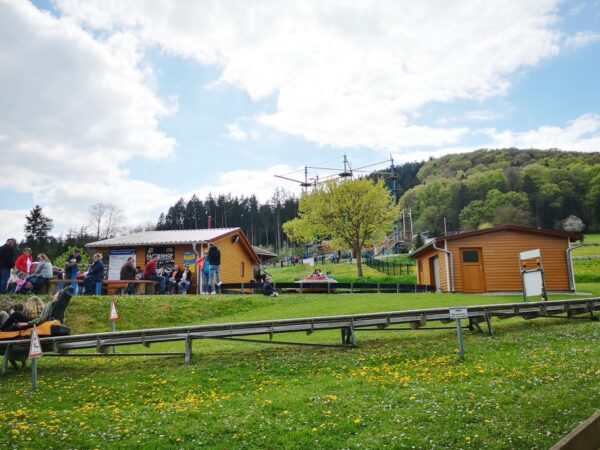


(unpaid advertising due to naming and shaming)
Our excursion tips on Facebook:
Do you already know our Facebook group “Excursion tips in and around Regensburg plus Upper Palatinate” with more than 22,000 members? Click here for the group.
RegensburgNow.de has over 40,000 readers per month and is a site of the RegensburgNow agency. If you are interested in advertising on RegensburgNow, please write to us at mail@regensburgnow.de
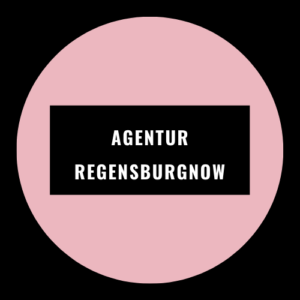
Don’t miss a thing! Subscribe to our newsletter:
Want more tips? Then please click here:

















